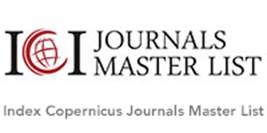Microcredit and the Socio-cultural Obstacles to Women’s Empowerment in Northern Territories of Ghana
DOI:
https://doi.org/10.33831/jws.v19i2.276Keywords:
microfinance, poverty, women’s empowerment, northern GhanaAbstract
This study investigates the impact of microfinance programmes on women’s empowerment in the northern territory of Ghana, which is known as the poorest part of the country. A survey methodology is used to collect data from a sample of 247 female entrepreneurs and their husbands (189 women and 58 men) in rural areas. The majority of the sample are aged 40 or below, and many are illiterate. The research findings indicate that although microfinance appears to have some positive effects on women’s income, it is insufficient to ease the hardships in the lives of women in northern Ghana. Most female respondents indicated that women are largely forbidden by men to own productive assets such as land and livestock. The traditional domineering behaviour of men remains a significant obstacle. Despite the increase in access to credit, microfinance itself may not be sufficient to eliminate barriers to women’s empowerment and to the reduction of poverty.
References
Arunachalam R.S. (2008). Micro-finance and Innovative Financing for Gender Equality: Approaches, Challenges and Strategies. In, Small Change or Real Change? Commonwealth Perspectives on Financing Gender Equality. Commonwealth Secretariat.
Bendroth M.L. (1999). Fundamentalism and the family: Gender, Culture, and the American Pro-Family Movement. Journal of Women’s History, 10(4): 35–54.
Bhatt N. & Tang S. (2001). Delivering Microfinance in Developing Countries: Controversies and Policy Perspectives. Policy Studies Journal, 29(2): 319–333.
Boateng G.O., Boateng A.A. & Bampoe H.S. (2015). Microfinance and Poverty Reduction in Ghana: Evidence from Policy Beneficiaries. Review of Business & Finance Studies, 6(1): 99–108.
Cheston S. & Kuhn L. (2002). Empowering Women through Microfinance. In Daley-Harris S. (Ed.), Pathways out of Poverty: Innovations in Microfinance for the Poorest Families. Kumarian Press: 167–228.
Chowdhury M.J.A., Ghosh D. & Wright R.E. (2005). The Impact of Micro-Credit on Poverty: Evidence from Bangladesh. Progress in Development Studies, 5(4): 298–309.
Correll S.J. (2004). Constraints into Preferences: Gender, Status, and Emerging Career Aspirations. American Sociological Review, 69(1): 93–113.
Folbre N. (1994). Who Takes Care of the Kids? Gender and the Structures of Constraint. London: Routledge.
Ghana Statistical Survey (1999). Ghana Living Standards Survey. Retrieved from http://www.statsghana.gov.gh/censuses.html.
Ghana Statistical Service (2010). Population and Housing Census. Retrieved from http://www.statsghana.gov.gh/censuses.html.
Hietalahti J. & Linden M. (2006). Socio-economic impacts of microfinance and repayment performance: A case study of the Small Enterprise Foundation, South Africa. Progress in Development Studies, 6(3): 201–210.
Hulme D. & Mosley P. (1997). Finance against Poverty, 2 Volumes. London: Routledge.
IFAD (International Fund for Agricultural Development) (2015). Investing in Rural People in Ghana. Retrieved 10 March 2015, from https://www.ifad.org/documents/10180/2a21dd44-fe65-4c67-b5ae-a39e3a168185.
IFC (International Finance Corporation) (October 2011). Strengthening access to finance for women-owned SMEs in developing countries. Washington DC: International Finance Corporation. Retrieved 3 May 2015, from http://www.ifc.org/wps/wcm/connect/a4774a004a3f66539f0f9f8969adcc27/20_Women_Report.pdf?MOD=AJPERES.
Ifelunini I.A. & Wosowei E.C. (2013). Constraints to Women Entrepreneurs’ Access to Microfinance in South-South Nigeria. Research Journal of Finance and Accounting, 4(6). Retrieved 16 March 2015, from http://www.iiste.org/Journals/index.php/RJFA/article/view/5643/5755.
Karim L. (2011). Microfinance and its Discontents: Women in Debt in Bangladesh. Minneapolis: University of Minnesota Press.
Khandker S.R. (2003). Microfinance and Poverty: Evidence Using Panel Data from Bangladesh. Policy Research Working Paper No. 2945. Washington, DC: World Bank.
Leach F. & Sitaram S. (2002). Microfinance and Women’s Empowerment: A Lesson from India. Development in Practice, 12(5): 575–588.
Ledgerwood J. (1998). Microfinance Handbook: Sustainable Banking with the Poor. Washington, DC: World Bank.
Ledgerwood J. (2013). The New Microfinance Handbook: A Financial Market System Perspective. Washington, DC: World Bank.
Mayoux L. (2008). Women Ending Poverty: The WORTH program in Nepal –Empowerment through Literacy, Banking and Business. Retrieved 15 March 2015, from http://www.seepnetwork.org/filebin/pdf/savings_led_working_group/library/Women_Ending_Poverty-The_WORTH_Program_in_Nepal.pdf.
Mlachila M. & Chirwa E.W. (2002). Financial Reforms and Interest Rate Spreads in the Commercial Banking System in Malawi. Working Paper WP/02/6, International Monetary Fund. Retrieved 20 May 2015, from www.imf.org/external/pubs/ft/wp/2002/wp0206.pdf.
MOFEP (2015). General Background on Global Microfinance Trends. Retrieved 5 June 2015, from http://www.mofep.gov.gh/sites/default/files/pages/microfinance _0.pdf.
Morduch J. (2000). The Microfinance Schism. World Development, 28(4): 617–629.
Otero M. (1999). Bringing Development Back into Microfinance. Journal of Microfinance, 1(1): 8–19.
Rhyne E. & Otero M. (1994). Financial Services for Microenterprises: Principles and Institutions. World Development, 20(11): 1561–1571.
Ridgeway C.L. & Smith-Lovin L. (1999). The Gender System and Interaction. Annual Review of Sociology, 25(1): 191–216.
Rogan M. (2016). Qualitative Perceptions of the Meaning of ‘Headship’ and Female-Headed Households in Post-Apartheid South Africa. Social Dynamics, 42(1): 175–195.
Steel W.F. & Andah D.O. (2003). Rural and Microfinance Regulation in Ghana: Implications for Development and Performance of the Industry. Africa Region Working Paper Series No. 49. Washington, DC: World Bank.
Wagner J. (2007). What a Difference a Y makes - Female and Male Nascent Entrepreneurs in Germany. Small Business Economics, 28(1): 1–21.
World Bank (2011). Republic of Ghana: Tackling Poverty in Northern Ghana. Report No. 53991-GH, World Bank. Retrieved 5 July 2015, from http://documents.worldbank.org/curated/en/2011/03/14238095/tackling-poverty-northern-ghana.
World Bank (2015). World Bank Poverty and Inequality Database. Retrieved from https://data.worldbank.org/data-catalog/poverty-and-equity-database.
World Economic Forum (2015). The Global Gender Gap Index 2014. Retrieved 5 July 2015, from http://reports.weforum.org/global-gender-gap-report-2014/rankings.
Wrigley-Asante C. (2012). Out of the Dark but Not Out of the Cage: Women’s Empowerment and Gender Relations in the Dangme West District of Ghana. Gender, Place & Culture, 19(3): 344–363.
Downloads
Published
Issue
Section
License
Authors who publish with this journal agree to the following terms:
- Authors retain copyright and grant the journal right of first publication, with the work [6 months] after publication simultaneously licensed under a Creative Commons Attribution License that allows others to share the work with an acknowledgement of the work's authorship and initial publication in this journal.
- Authors are able to enter into separate, additional contractual arrangements for the non-exclusive distribution of the journal's published version of the work (e.g., post it to an institutional repository or publish it in a book), with an acknowledgement of its initial publication in this journal.
- Authors are permitted and encouraged to post their work online (e.g., in institutional repositories or on their website) prior to and during the submission process, as it can lead to productive exchanges, as well as earlier and greater citation of published work (See The Effect of Open Access)







